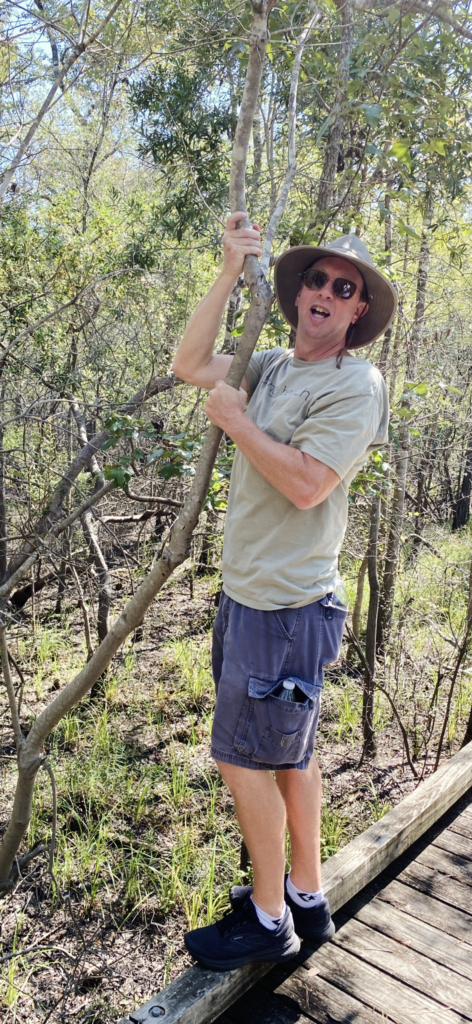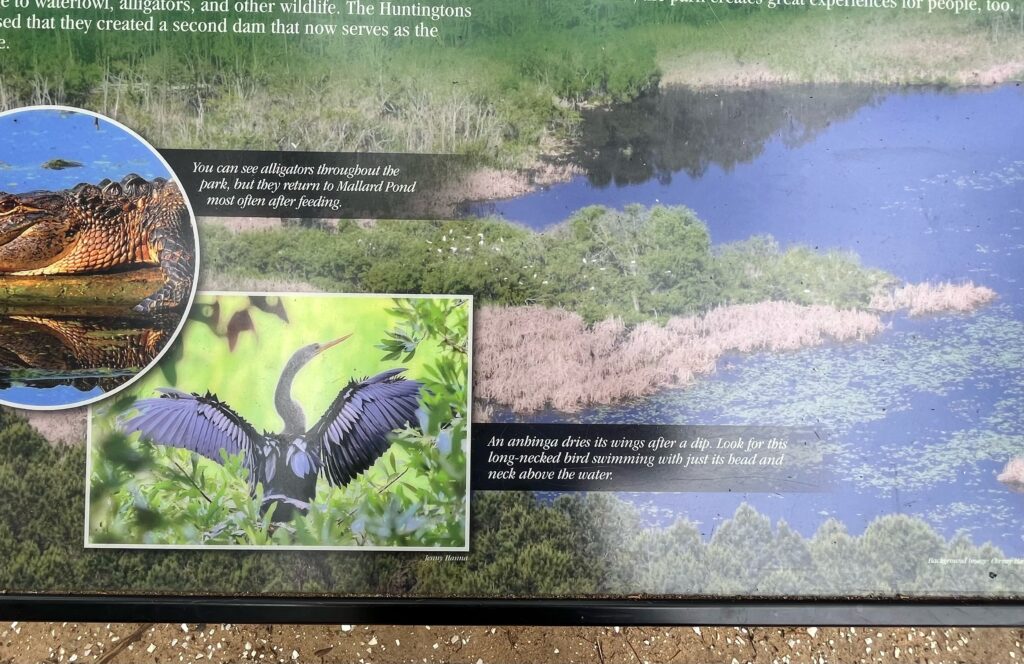One of the things Karen and I love about the Carolinas is the Wildlife. For birders, there are over 700 species of birds to observe. One of the birds we love spotting when traveling the Carolinas is the Anhinga.
The Anhinga is a fascinating bird
Commonly found in the southeastern United States, including areas like Myrtle Beach, SC, particularly in marshes, swamps, and freshwater ponds. It’s also known as the “snakebird” because its long, slender neck resembles a snake swimming with just its head and neck above water. Here are some key features and behaviors of the AnhingAna:
Anhinga Appearance
Anhingas are large, dark waterbirds with long, S-shaped necks and pointed bills. They have a wingspan of around four feet and a body length of about three feet. Adult males have glossy black feathers with silvery-white streaks on their wings. In contrast, females and juveniles have a brownish-black coloration.
Anhinga Habitat
They prefer habitats with plenty of water, such as marshes, swamps, lakes, rivers, and coastal areas like lagoons and estuaries. They can be found in both freshwater and brackish water environments along the Carolinas.
Anhinga Feeding
Anhingas are skilled hunters and primarily feed on fish, but they also consume amphibians, crustaceans, and sometimes small reptiles. They hunt by swimming underwater and spearing their prey with their sharp bills. Unlike ducks, their feathers are not waterproof, which helps them dive and maneuver underwater more easily.

Anhinga Behavior
Anhingas are often seen perching on branches or logs near water, spreading their wings to dry after swimming. Their feathers lack the waterproof oils found in other waterbirds, so they need to dry out their wings to maintain buoyancy and flight. Anhingas are solitary birds outside of the breeding season but may gather in groups at prime feeding locations.
Breeding
All through the breeding season, which typically occurs in spring and summer, Anhingas form monogamous pairs. Males perform elaborate courtship displays, including wing-flapping and throat-puffing, to attract females. Anhinga’s build large stick nests in trees near water, where females lay a clutch of eggs. Both parents take turns incubating the eggs and caring for their young. You can learn more about local birds here.

The Anhinga is a remarkable bird known for its distinctive appearance, remarkable diving abilities, and unique behaviors. Seeing one in the wild, especially in a beautiful location like Huntington Beach State Park, is always a memorable experience!
Plan your visit to Huntington Beach State Park Here
Dennis Stemmle is a bestselling author, entrepreneur, and lecturer at Coastal Carolina University. He writes about travel, college success, and entrepreneurship.
